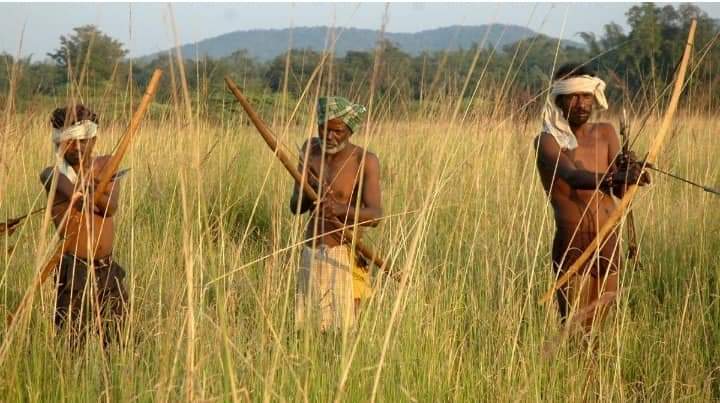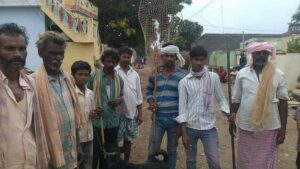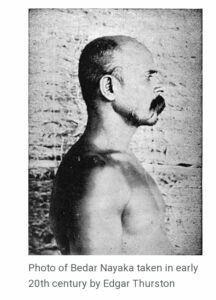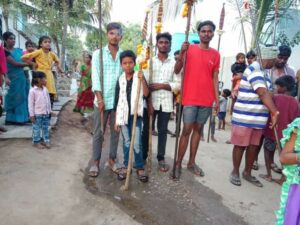Other tribespeople fear that including Boya Valmikis in the Scheduled Tribes list would affect their reservation quota.

Other tribespeople see Boyas as a marginal section, confined to the four districts in the Rayalaseema region. (Supplied)
Considered to be the descendants of Sage Valmiki, the author of the epic Ramayana, Boya Valmikis are scattered all over India. Traditionally hunter-gatherers, the British classified them as a martial tribe and drafted several of them into the army.
In Andhra Pradesh, however, other tribespeople see Boyas as a marginal section, confined to the four districts in the Rayalaseema region.
On Friday, 24 March, the ruling YSRCP government passed a resolution in the state Assembly, urging the Centre to include Boyas on the list of Schedule Tribes (STs).
The YS Jagan Mohan Reddy government’s bid to reach out to the marginalised communities ahead of the 2024 elections, however, has met with resistance.
Other tribespeople are opposed to the government move, fearing that such an inclusion would eat into their reservation quota.
Besides pointing out that the Boyas are confined to the Rayalaseema region, they argued that the community does not have a socio-cultural or traditional affinity with the native tribes.
The Opposition made Chief Minister Jagan Mohan assure the House that the inclusion of the Boyas in the ST list would not affect the reservation status of others.
The state Assembly has now adopted resolutions to include Boyas in the ST list twice after the bifurcation of the state in 2014. The first resolution was passed by the then-TDP government in 2017, and the second, last week.

The latest move by the Jagan government to adopt a resolution just a year ahead of the general polls is being viewed by the Boya Valmikis as a political stunt. (Supplied)
Notably, all political parties in the state — TDP, YSRCP, Jana Sena, and BJP — have promised to force the Centre to include the Boya Valmikis in the ST list.
The latest move by the Jagan government to adopt a resolution just a year ahead of the general and state elections is being viewed by the Boya Valmikis as a political stunt. Other tribespeople in the scheduled areas are not amused either. They want to teach the YSRCP a befitting lesson in the 2024 polls.
Incidentally, the YSRCP won all seven Assembly segments and one Lok Sabha constituency reserved for STs in 2019.
“We don’t see any merit in the current government adopting a resolution and sending a resolution again to the Centre just a year before the general polls,” Jakkula Srinivas, the general secretary of the Andhra Pradesh Boya Valimiki Sangham (APBVS), told South First.
“The previous (TDP) government had done a considerable amount of work by appointing at least two different committees and finally forwarding a resolution and recommendations to the Centre. And there was some correspondence between the Centre and the state government, too,” he explained.
“Meanwhile, the state went to the polls. Now, the present government has restarted the entire process yet again. It should have been taken up from where the previous dispensation had left the process, so that there would be some positive outcome,” Srinivas added.
The APBVS has been fighting for the rights of the Boyas who live in the plains. Interestingly, while those Valmikis who live in scheduled areas are on the ST list, the Boya Valmikis who live in plains are in the BC-A category.
“Boyas or Boya Valmikis are not tribals. They don’t follow any of the customary traditions that we tribals follow in the scheduled areas. They don’t have any socio-cultural affinity with us. If they are included in the ST list we will lose opportunities that we get under the ST reservation,” P Appala Narasa, national executive member of the Girijana Sangham, did not hide his apprehension.

The Boya Valmiki community is known as Bedar, Valmiki, Beda, and Nayakulu in Bellary, Chitradurg, and Raichur districts of Karnataka. (Supplied)
“We also fear that they will take over political opportunities from us in the Agency areas. We suspect it is a government ploy to loot the natural resources available in the scheduled areas by helping Boyas take over leadership roles. They will get access to everything in the scheduled areas,” Narasa told South First.
After the Assembly had passed the resolution, the Girijan Sangham took out protest marches. The organisation is planning another demonstration against the government’s move on 31 March.
The ST list mentions around 34 different tribal groups in the state. While tribals form around six percent of the total population, according to one estimate, Boya Valmikis, numbering 28 lakh, are mostly concentrated in Rayalaseema.
In a bid to allay the fears of others, Chief Minister Jagan said that the inclusion of the Boyas living in the Kurnool, Kadapa, Anantapur, and Chittoor districts in the ST list would not reduce the reservation quota since a zoning system is in force as per a six-point formula.
The inclusion might affect only Group 1 jobs, which are under the non-zoning category. However, it is insignificant as only 386 Group 1 jobs have been notified in the past 10 years and the six percent reservation from that amounts to a meager 21 or 22 posts, Jagan said.
The one-man I Samuel Anand Kumar Commission that studied the social and economic conditions of Boyas in the four districts, and the ST Commission, too, subscribe to this assessment, the chief minister said.

The majority of Boya Valmikis (47pc) are landless and 45pc are small and marginal farmers. (Supplied)
The Anand Kumar commission appointed by the YSRCP government pointed out that the demand to include the Boya Valmiki Community in the ST list has been remaining unmet for the past 70 years.
The Boya Valmikis lived in the hilly tracts along with the Chenchus and Yerukulas. They were enlisted as a “criminal tribe” along with 59 other communities included in the list of denotified tribes, but not included in the ST list, while other ex-criminal and de-notified tribes were included, the Anand Kumar commission said in its report.
The commission studied the issue in detail and made certain recommendations. The socio-economic survey conducted by the commission observed the educational, economic, and social backwardness of the community.
Some of the observations are:
A socio-economic survey conducted by the government also established that the Boya Valmiki communities in the Rayalaseema region are in constant contact with similar communities across the border in Karnataka.
These groups got scattered in different states after the formation of new states on a linguistic basis. Despite the administrative boundaries separating them, they still have marital relations with their counterparts across the border.
The Boya Valmiki community is known as Bedar, Valmiki, Beda, and Nayakulu in the Bellary, Chitradurg, and Raichur districts of Karnataka.
Even the major sub-divisions of the Boya/Bedar community are similar in both Andhra and Karnataka.
“The Bellary district was a part of Andhra until 1956. Thus we can find people belonging to the same community across the border. They are all classified as STs in Karnataka,” Srinivas said.
APBVS state president Dr B Vikram Naidu said that the Valmiki/Boya community residing in the non-agency areas of Andhra Pradesh is still a socially and economically backward class due to discrimination and not having the ST status.
“If we refer to a report by the British government, the Boya Valmiki community was treated as a ‘criminal tribe’ and, in some villages, people from this community were directed to report to the local police station every day as per the Criminal Tribal Act, 1871,” he told South First.
“Further, even now in some of the parts of Andhra Pradesh, the people from the Boya community are being hired by the Reddys, the forward community, for criminal activities, culminating in many families losing their breadwinners,” he further stated.
“As per statistics, in the Kurnool district alone there are 904 criminal cases involving nearly 4,000 people from this community. Some of the innocent youngsters of this community are falsely implicated in criminal activities, to save the forward caste people who had actually committed the crime,” he explained.
“This is because of the unflinching loyalty to the landlords, illiteracy, and poverty. Nobody prefers to have such a life if their economic conditions are on a par with other communities,” Naidu added.

Apr 19, 2024

Apr 18, 2024

Apr 18, 2024

Apr 18, 2024

Apr 17, 2024